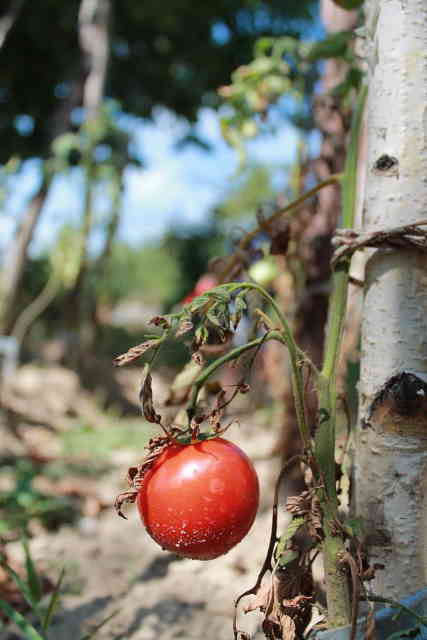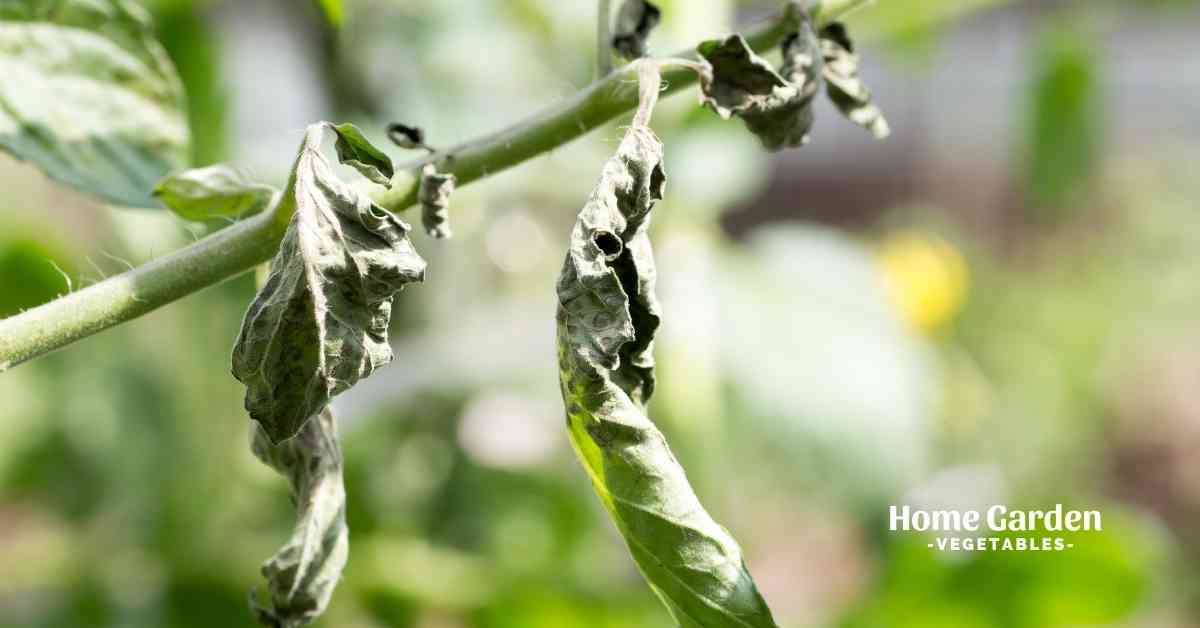It’s heartbreaking to see tomato plants that started out as perfectly healthy seedlings beginning to wilt just when it’s time to grow vigorously and set a hefty crop. If you see drooping leaves and a limp structure of the tomato plants, it may seem like they’re too far gone, but in most cases that’s not the case. Sometimes, some simple techniques can rectify the problem and revive the plants. However, in some cases, the problem can be more serious. Let’s discuss what makes a tomato plant wilt and understand how to fix it.

Wilting In Tomato Plants
Here’s a list of some of the most common causes for wilting in tomato plants. Let’s see what each one looks like and what you can do to rectify the condition.
Reader Poll: What online courses would interest you?
Underwatering
Lack of water is a common cause of wilting in tomato plants. Tomatoes need around 1 inch of water each week to stay healthy. Plant cells store water. Among other benefits, water gives the cells their structure. As the bigger picture, water helps the plants stand sturdy and hold their shape. When there’s not enough water for the plants to take up, you’ll notice a drooping structure, and thinner, wilted leaves.
If it has been just a few days since extreme wilting, your tomato plants can experience full recovery if they are offered a deep watering. Follow a regular watering schedule from this point onwards, offering about an inch of water each week. They may need to be watered more often when the summers are at their peak and the weather is exceptionally hot and dry.
If severe wilting continues for several days and the tomato plants are severely dehydrated, they can even die.
Subscribe to our newsletter!
Overwatering
It’s not always lack of water that causes tomato plants to wilt, so don’t reflexively offer water each time you see tomato plants wilt. Sometimes the culprit is overwatering! When the soil is overly wet for long durations, roots can rot. Tomato plants wilt and droop, but the leaves do not appear dehydrated and paper-like, as is the case with underwatering.
Check the soil to see if it is wet. In case of wet soil, let it dry out to several inches below the soil surface before watering again. Follow a regular watering session, allowing the soil to dry out between waterings.
Transplant Shock
Transplant shock can also cause tomato plants to wilt. Plants often don’t like being moved. If you have to do so, transplant with care to prevent any disturbance to the plant itself or its environment. Moving the plant from indoors to outdoors without properly hardening off, transplanting the plant in cold soil or damaging the roots in the process of transplanting can all lead to transplant shock.
Yellow, wilted leaves soon after transplanting are some of the symptoms you’ll notice. In most cases, allowing the plants to adjust to the new environment is enough to help them revive over the next few days.
Fungal Diseases
There are quite a few fungal diseases that can cause wilting of tomato plants. Verticillium wilt, fusarium wilt, and southern blight are some of the most common fungal problems that can cause your tomato plants to wilt. The symptoms of all three diseases are often similar, making it hard to differentiate. Wilting and yellowing of leaves begins at the base of the plant, causing the plant to droop in the later stages of the disease.
If you find mold-like material around the lower part of the stem, around the roots and on the surrounding soil, you’re most likely dealing with southern blight. With fusarium wilt, infection often begins on one side of the plant before it spreads to the entire plant. With verticillium wilt, in contrast, the plants may appear to recover by evening, but as soon as it’s morning, they’ll droop again.
The bad news is, there’s no way to cure any of the three diseases. Once a plant is infected with a fungal disease, it’s important to uproot it and throw it away to prevent the infection from spreading to the surrounding plants. Don’t compost the infected plant. Practice crop rotation and purchase resistant varieties so you don’t have to deal with the same problem in future growing seasons.
Viral Infections
Certain viral infections can also be responsible for the wilting of tomato plants. Tomato spotted wilt virus (TSWV) is a serious problem that often appears in tomato crops. It affects several tomato varieties across the globe and is often spread by thrips, a pest that feeds on tomato plant sap. Wilting usually affects the growing tips of the plants, causing the branches to die back. When it affects the fruit, brown or green rings form on the surface. Brown flecks on leaves and upward curling of leaves are also some common symptoms associated with the disease.
Infected plants cannot be cured and will need to be removed from the garden. However, since it’s not a soil-borne disease, you may plant your next season’s crop at the same spot without worrying about a reinfection.
Pests
Stalk borers and thrips can also cause wilting in tomato plants. Thrips expose the plant to TSWV, while stalk borers are small caterpillars that dig a tiny hole in the main stem, feeding on the inside of the plant, disrupting the water and nutrient transport system. Eventually the plant will wilt and die. With good care, infested plants may survive and also set some fruit. Insecticides cannot control stalk borers.
Root knot nematodes can also be the culprit. They attack and feed on the roots of the plants, inhibiting their ability to take up water, eventually resulting in the wilting of plants. Planting resistant varieties, labelled N, can help prevent attacks by nematodes.
Conclusion
Now you know what makes a tomato plant wilt. Make sure you address the problem promptly and revive your plant’s health just in time to produce some delicious tomatoes before the season ends.

